Surgery? On a fish? As odd as that may sound, fish surgery is a common occurrence in our veterinary practice. From the simple “lump-ectomy” to a fully-invasive abdominal explore (ceolom explore for professionals), fish can undergo surgery just like you or your furry pets. We have some of these posted on YouTube for you to get a better idea of what they entail.
Abdominal Explore – Tumor Removal in a Koi
Wen Trim – Oranda (Goldfish) Haircut
Still want to know more? Here are some of our most frequently asked questions about fish surgery:
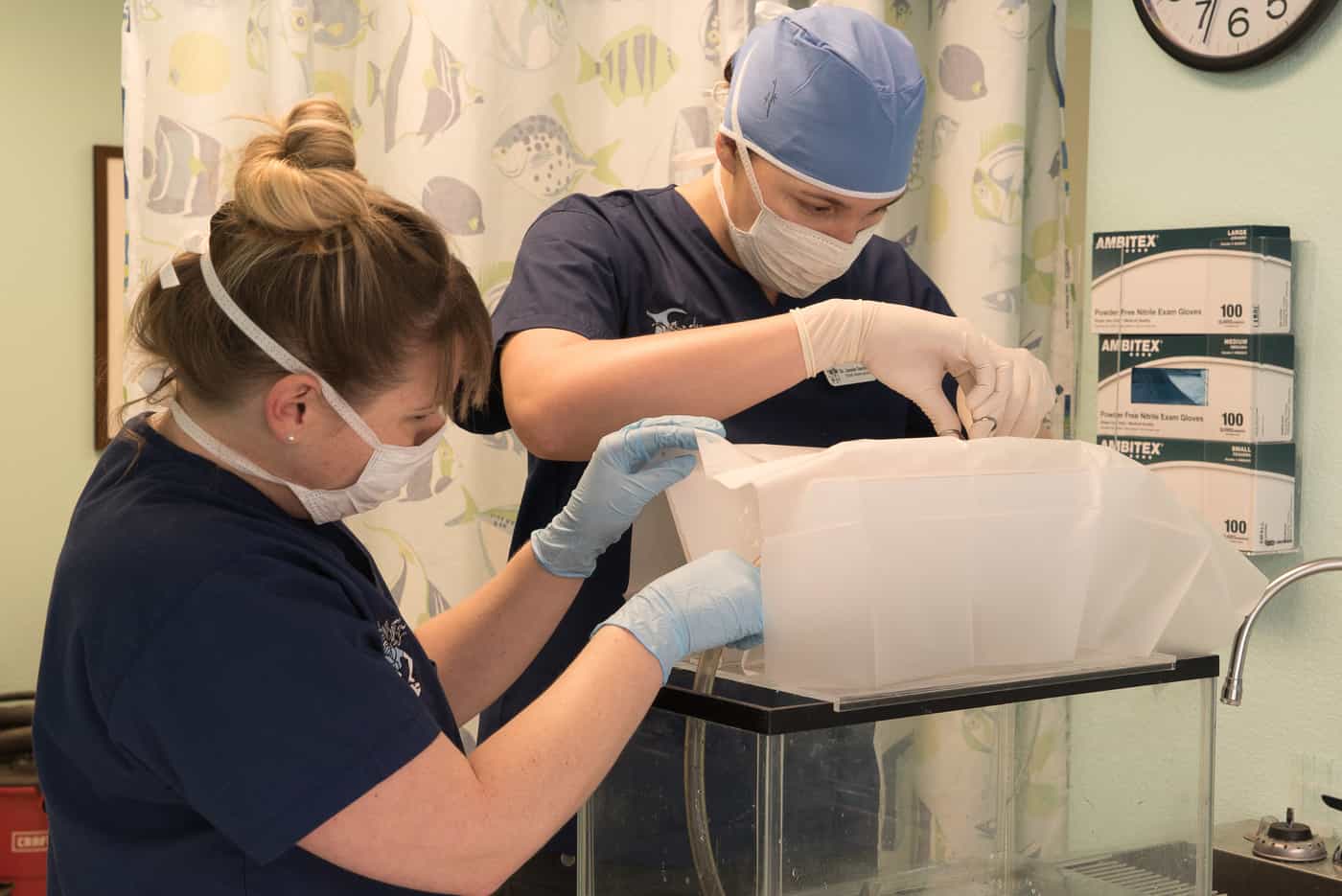
1. Is the fish anesthetized?
Absolutely! Even most of our routine physicals are performed under sedation. Unlike a cat or a dog, manually restraining a fish is a fruitless endeavor. They are very slippery and have no limbs to hold on to! For fish surgery, we want to make sure they hold perfectly still, so we anesthetize them to the point where they can still breathe on their own, but they can’t feel us cutting or stitching. I usually have my surgical assistant monitor the patient’s breathing while I mess around with the rest of the body. We use a drug called MS-222, also known as Tricaine or Syncaine. It is commonly used in fish medicine and has a very rapid recovery rate.
2. Do you stitch them up after surgery?
It depends on the surgery, but in the case of a large incision, we absolutely stitch them back up! Before cutting them open, we remove the scales along our incision site, revealing their underlying skin. Trying to cut into the skin without removing the scales would dull a dozen scalpel blades before we were able to get in there! Upon completion of the procedure, we stitch them up using regular suture material through their skin.
We can use absorbable or non-absorbable suture in fish, and it’s usually up to the veterinarian’s discretion. I prefer a non-absorbable suture material, therefore ensuring I have to check the fish about 10-14 days later to remove the sutures and check in his progress.
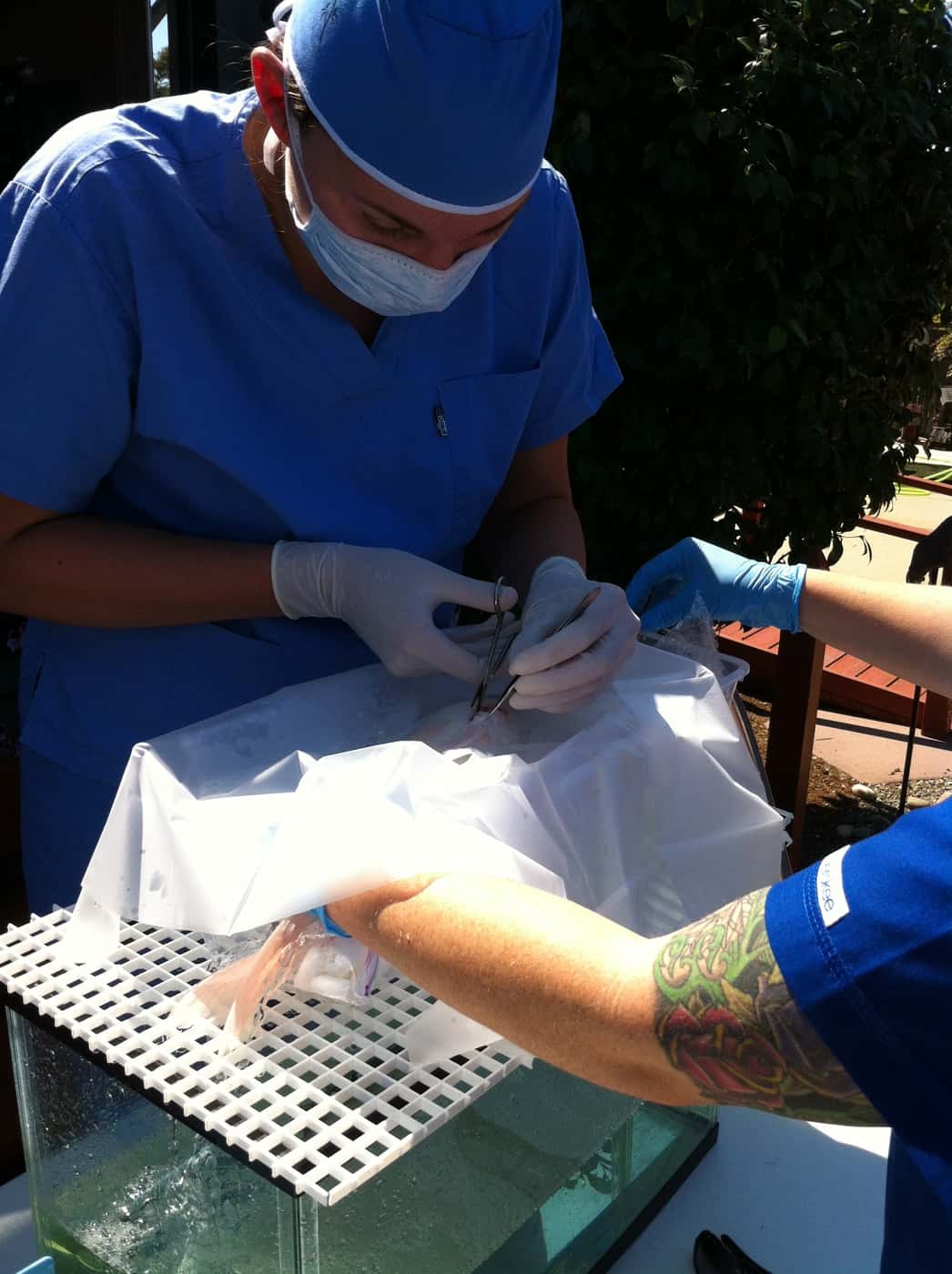
3. How long do they need to recover?
For most of our fish surgery procedures, fish will fully recover from anesthesia within 10-15 minutes. Some fish are more sensitive than others and will need more time. Others wake right up as soon as they go back in their home tank/pond. If there is an incision that needs to heal, fish in warm water (>65 F) will heal within 10-14 days. Colder water leads to longer healing time, since a fish’s metabolism is directly correlated to the water temperature. Lower metabolism = lower immune function = slower healing.
4. How does fish surgery differ from cat/dog surgery?
Between the land and water, the actual procedures are remarkably similar. Anatomy, however, is a different story. They all have the basic structures, kidneys, spleen, liver, heart, intestines, etc., but they are in very different places and can look very odd. Specialized training is certainly required to recognize a cat kidney from a fish kidney. Anesthesia is another key difference for surgery.
Dogs and cats require inhalant anesthesia for most procedures, that is taken into the blood through the lungs. Well, fish don’t have lungs and can’t breathe air, so we dissolve the anesthetic in the water that passes over their gills and into their blood.
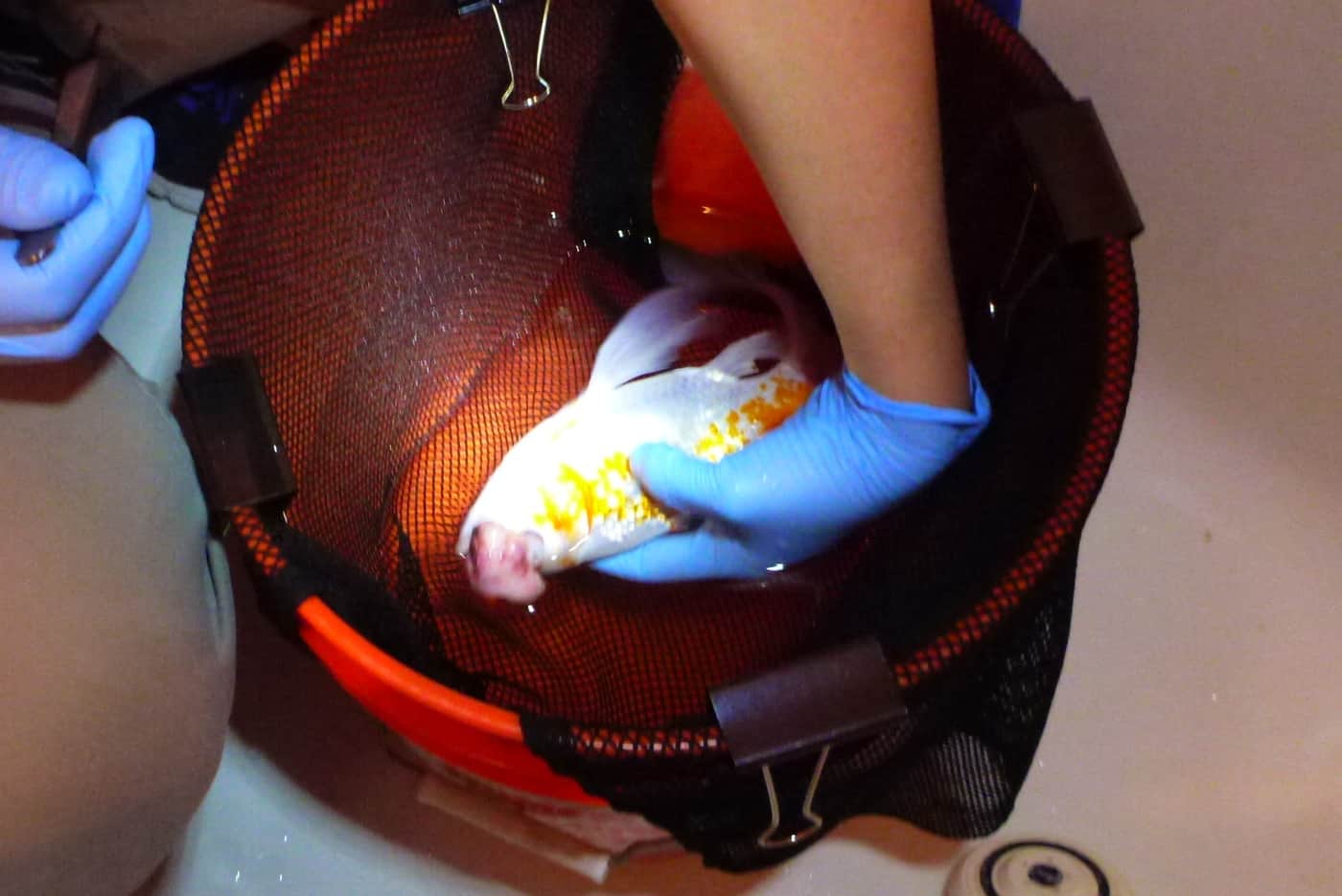
5. What is the most common surgical procedure you perform?
They most common fish surgery I perform are eye removals, or enucleations. When eyes get damaged or have large growths on them, treating the globe itself is very hard with the fish having to live underwater. Most of the time, the best course of action is to simply remove the eye. Removing the eye has very minimal impact on a fish’s quality of life. They can still sniff out their dinner and use their lateral line system to tell where they are swimming and where their friends are. Fish living in groups that have vision issues or an eye removal will sometimes form a close attachment with another fish in the pond. They follow their buddy constantly and use them as a “seeing eye fish.”
6. What is the cost for fish surgery?
Cost depends on the area of the surgery, the amount of tissue involved and where the issue is located. Your veterinarian should be able to discuss all associated costs with you prior to any procedure. Our office always provides a written estimate for any of our fish surgery procedures.
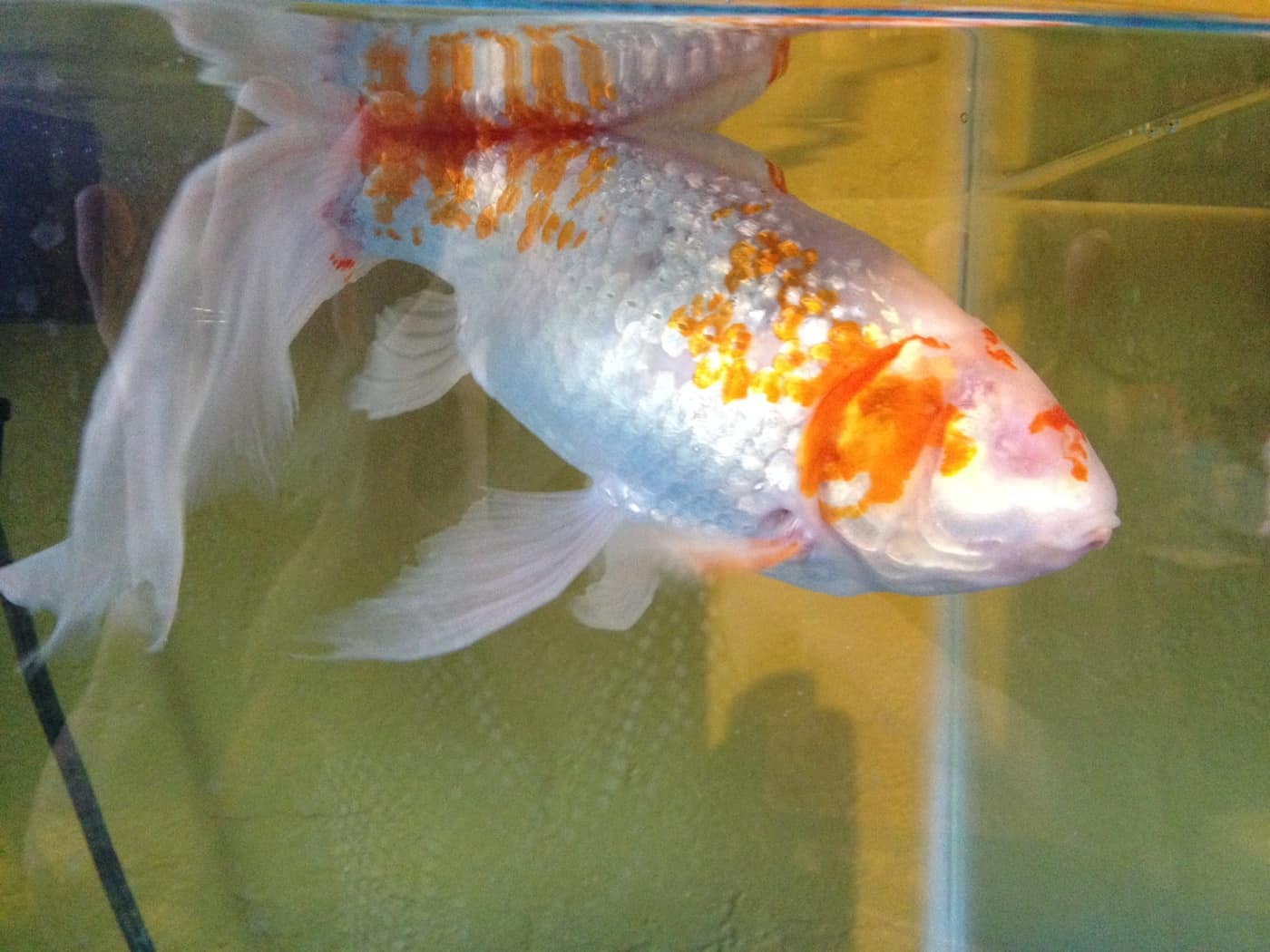
7. Do you use any pre-operative or post-operative drugs or antibiotics?
Again, it depends on the type of surgery. For simple lump removals or fish haircuts, no additional drugs are needed. For an invasive tumor removal, we often administer an intramuscular antibiotics and local pain medication.
8. Where does the fish recover?
If the home tank/pond water has good water quality, the fish can recover in their own water. We certainly prefer if they can go right back into an environment they are familiar with that has all their fish family. If the water quality is not great, the fish may need to recover in a separate quarantine tank.

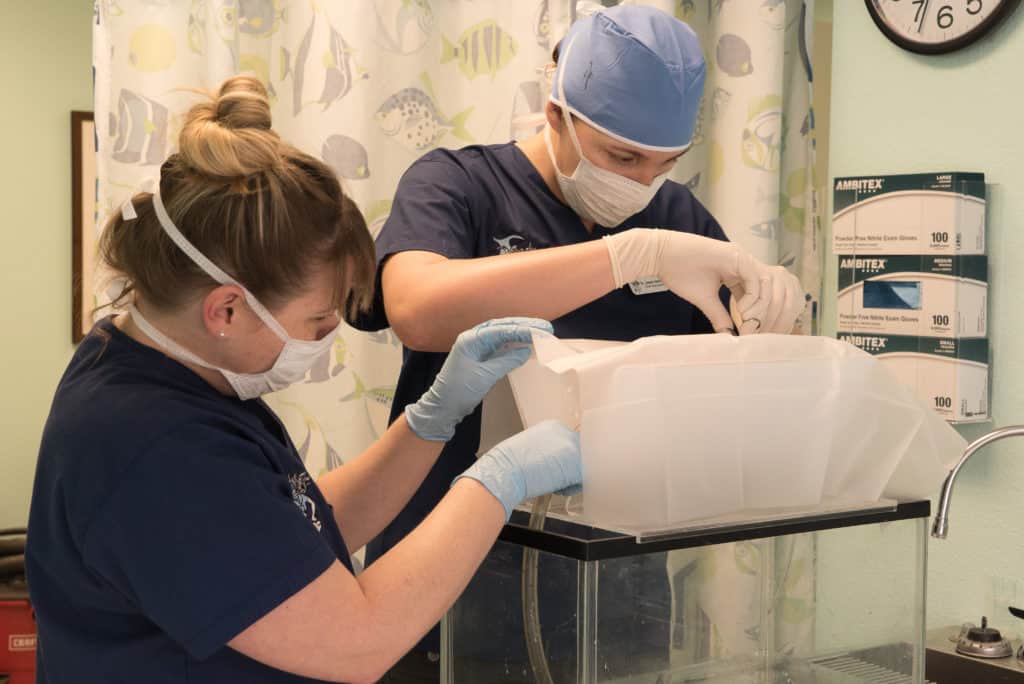
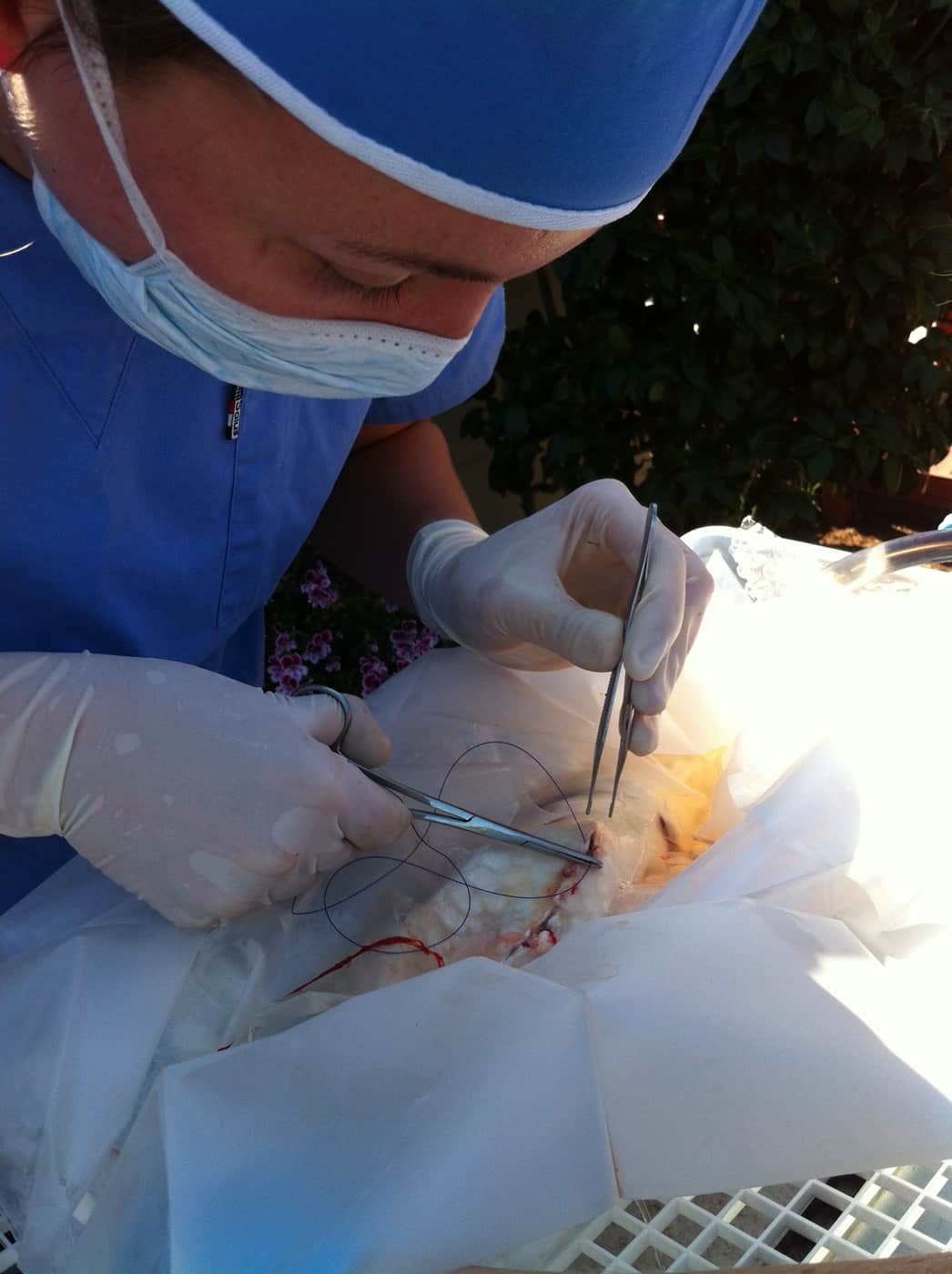
So amazing! You are such a talented woman!
Pingback: How Do Fish Undergo Surgery? – Aquatic Veterinary Services
Pingback: Fish Facts - Goldfish Wen Trim - PETS YELPS